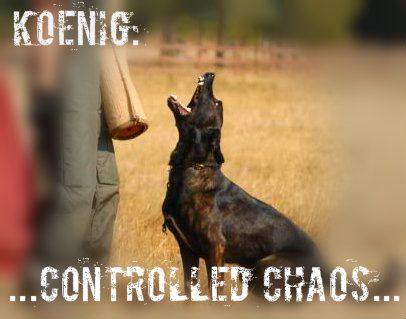My understanding of Constructional Aggression Treatment is limited, because it was taught to me in a context where I will readily admit to being receptive of very little of what the "teachers" had to say, so between my receptive bias at the time, my limited exposure to it, and the potential that the "teachers" themselves were teaching it incorrectly, I could be way off. Take anything I have to say worth a grain of salt.
Based on what I was taught, the premise is that dogs behave aggressively because they've been rewarded for that behavior, and by refusing to provide the reward and instead pairing negative behavior with an aversive consequence {and subsequently reinforcing desired behavior}, you train the dog not to be aggressive.
*IF* that is an accurate descriptor of CAT, then I have a couple of objections.
On it's face, it assumes that aggression has only one cause {reinforced aggressive displays}.
I disagree with that premise from the outset. Aggression in dogs has multiple causes, some of which are behavioral, some experiential, and some genetic.
The primary aversive recommended is either increasing distance between the aggressive dog and the target of the aggression, OR, decreasing the distance.
In other words, it requires the trainer to understand the motivation of the dog's aggression. If the dog is behaving in an aggressive manner because it wishes to scare off things it is afraid of {fear aggression}, the dog will be forced closer and closer to the thing it is afraid of, the assumption being that the dog will come to understand that the tactic of aggression will NOT scare it away, and will in fact cause the opposite to occur.
In my opinion, what you have really accomplished is devastatingly cruel, dangerous, and counterproductive.
You have taught the dog that you will not protect it from scary things, and instead, you will make them scarier and scarier the more the dog attempts to tell you about its fear. This seems, to me, a fundamental betrayal of the dog's trust.
Additionally, there is nothing to suggest that the dog has learned not to be afraid {and you've obviously proven that you aren't to be trusted}- the dog has only learned that giving you warning signs is a bad idea. You've created a dog that will not tell you when it is terrified and on the verge of lashing out.
The proponents of this technique champion its rapid results, claiming that they are faster than any other method. THAT I will not dispute. I am sure that the dog very quickly realizes that it will be punished for communicating anxiety, and learns not to betray its internal state. On the surface, the dog appears calm, and the method is proclaimed to have work.
But you haven't fixed the problem. You've just masked the behavior.
I have an even less formed understanding of the alternate aversive of increasing the distance between the dog and the target. I fail to understand on a basic level how walking away has resolved the dog's aggression. Any dog will cease to be aggressive when removed from the stimulus that triggers the aggression. What has been done to prevent the recurrence when the stimulus is re-introduced?
In my mind, the only logic I can see in this approach is if the dog is not actually aggressive, and simply becomes too excited, lunging, barking and pulling on the leash when it sees something that triggers prey or play drive. By continually removing the dog for those behaviors, it eventually learns that a calmer approach will allow it to actually get there.
This is a valid method of training leash manners and correcting other behavior issues, but it has no application to aggression, as the behaviors it corrects aren't aggression-based.
 Previous Topic
Previous Topic Index
Index Next Topic
Next Topic











 Top
Top







